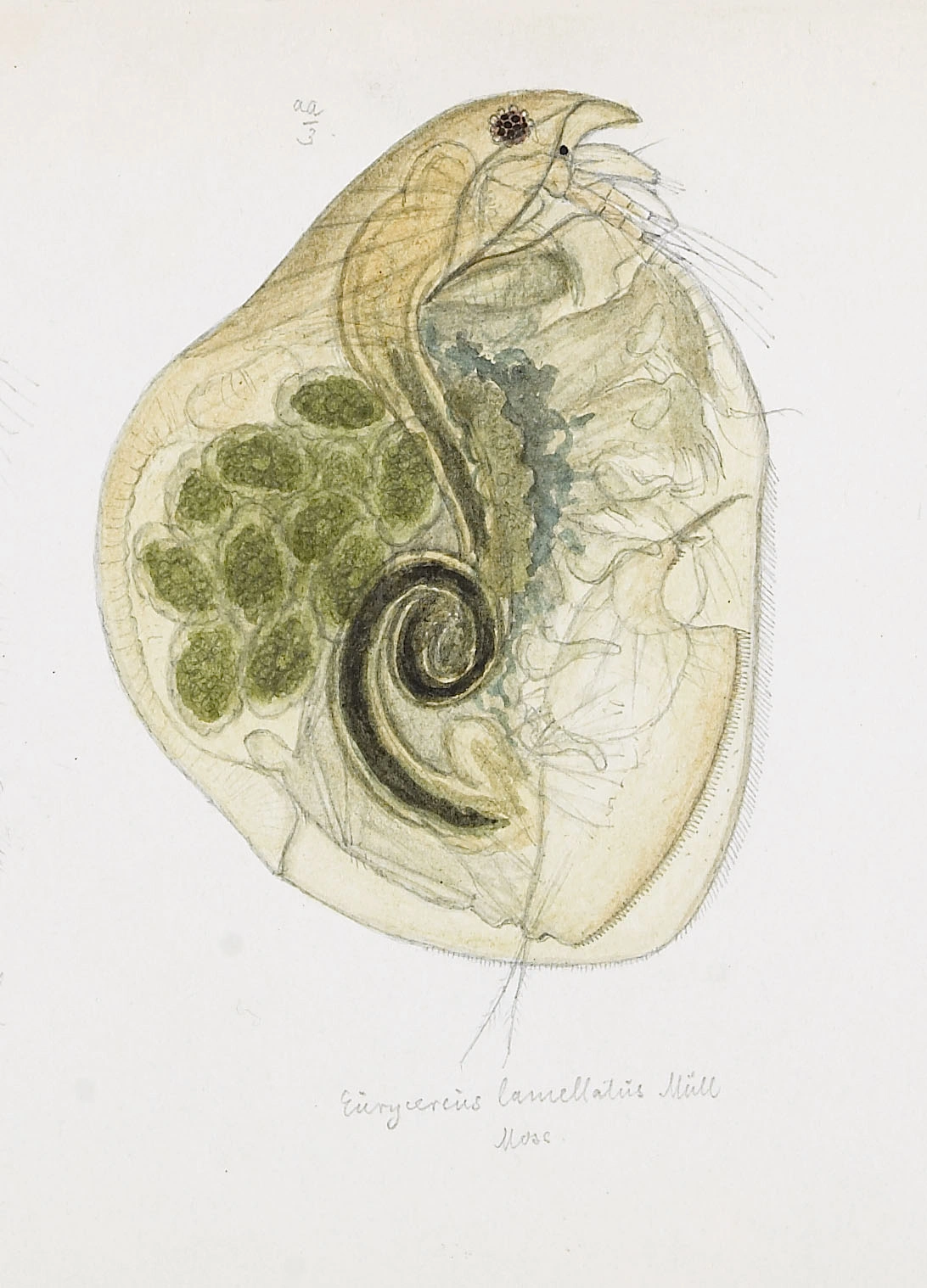Eurycercus glacialis
Eurycercus glacialis is the largest species among the chydorids. It is only recorded from four localities in the Lofoten area and can easily be mixed up with E. lammelatus which is a common species, widely distributed in Norway.
Key characteristics
Eurycercus glacialis is the largest species among the chydorids. Like its close relative, E. lamellatus, more than half of the length of the antennule is reaching beyond the rostrum. The sensory seta is situated between the middle and the end of the antennules. This is a character which distinguishes this species from E. lammelatus, which has its setae situated at the base of the antennule. E. glacialis has 77–91 teeth on the proximal part of the abdomen compared to more than 90 in E. lammelatus. Its colour varies from yellowish red to a olivaceaus brown, with elements of green.
Female: Length 4.0–6.0 mm
Male: Length 1.0–2.0 mm
Ecology and distribution
E. glacialis is only recorded from four localities in the Lofoten area (Nordland County). The four lakes are located 37–184 m a.s.l. and the size of the lakes varies between 0.5 and 21 ha. pH was between 6.3 and 7.0, while conductivity varied from 2.3 to 3.3 mS/m.
| Vitenskapelig navn | < 4,5 | 4,5 - 4,9 | 5,0 - 5,4 | 5,5 - 5,9 | 6,0 - 6,4 | 6,5 - 7,0 | 7,0 - 7,4 | > 7,5 |
|---|---|---|---|---|---|---|---|---|
| 0 | 0 | 0 | 0 | 0,3 | 0,3 | 0,4 | 0 |
| Vitenskapelig navn | < 1,0 | 1,0 - 1,4 | 1,5 - 1,9 | 2,0 - 2,9 | 3,0 - 3,9 | 4,0 - 4,9 | 5,0 - 6,9 | 7,0 - 9,9 | > 10,0 |
|---|---|---|---|---|---|---|---|---|---|
| 0 | 0 | 0 | 1 | 0,4 | 0 | 0 | 0 | 0 |
| Vitenskapelig navn | < 0,01 | 0,01 - 0,09 | 0,1 - 0,9 | 1,0 - 9,9 | 10,0 - 99 | 100 - 999 | > 1000 |
|---|---|---|---|---|---|---|---|
| 0 | 0 | 0,5 | 0,2 | 0,1 | 0 | 0 |
| Vitenskapelig navn | < 100 | 100-299 | 300-499 | 500-699 | 700-999 | >1000 |
|---|---|---|---|---|---|---|
| 0,2 | 0,4 | 0 | 0 | 0 | 0 |
Look-alikes
Eurycercus lamellatus
